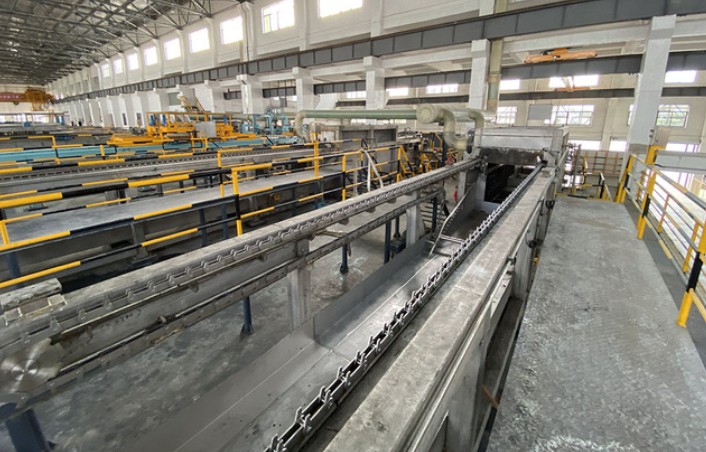NEWS&EVENTS
Home > News&Events > Company news > The "electrode spacing" of antimony electrolytic cells has a significant impact on production.
Electrode spacing is a key parameter in antimony electrolysis cell production; it refers to the average distance between the working surfaces of adjacent anodes and cathodes within the same electrolytic cell. This seemingly simple distance has a profound impact on multiple indicators of electrolysis production.

From an energy consumption perspective, the electrode spacing is a crucial component of the cell voltage in antimony electrolysis cells. When the electrode spacing increases, the electrolyte voltage drop increases significantly. This is because the migration distance of ions in the electrolyte becomes longer, requiring more work to overcome resistance, which in turn leads to higher energy consumption per ton of copper, resulting in a substantial increase in production costs.
In terms of quality, the electrode spacing is closely related to the quality of the cathode copper. If the electrode spacing is too small, the distance between the cathode and anode is shortened, increasing the probability of a short circuit. A short circuit prevents the current from participating properly in the electrolytic reaction, leading to abnormal local growth of the cathode copper and affecting its purity and surface quality. Conversely, while a large electrode spacing helps reduce short circuits, it increases power consumption, which is also detrimental to production efficiency.
Therefore, in actual production, there is an optimization goal: to use the smallest possible electrode spacing in the antimony electrolysis cell while ensuring the quality of the cathode copper and minimizing the occurrence of short circuits. This can reduce power consumption and production costs, while ensuring stable product quality, achieving a win-win situation for both economic benefits and product quality, and enhancing the company's competitiveness in the market.